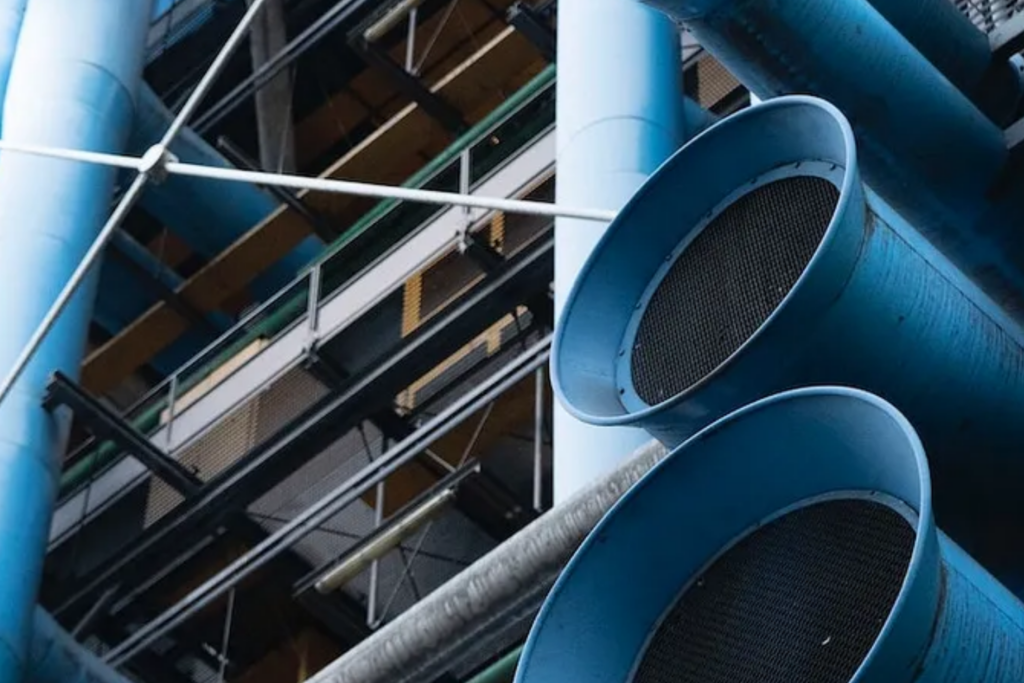Following the commercial-scale South Texas direct air capture (DAC) hub award, one of two large-scale DAC hubs awarded so far, the Department of Energy (DOE) is preparing to issue another funding opportunity for the Regional DAC Hubs program. The Office of Clean Energy Demonstrations (OCED) recently issued a notice of intent (NOI) detailing the agency’s ambitious plan to issue $1.8 billion to complement the first cohort of projects and address remaining technical and commercial adoption challenges.
While the details of this notice are subject to change, this NOI offers information about DOE’s draft plan to support mid- and large-scale DAC and faithfully steward the implementation of the Hubs program. This funding will help address a suite of challenges faced by DAC developers seeking to demonstrate their technologies, including capital, infrastructure, and commercial project development.
We’re excited to see that OCED’s recent request for information (RFI) on mid-scale DAC has informed a robust NOI — one that supports DAC technology and project developers at various stages on their commercialization path toward establishing a regional DAC hub, including many of our recommendations.
The details
Like the first funding opportunity, DOE signals it will allocate funding across three different topic areas (TA), defined differently from the first FOA.
- Infrastructure Scaling Platforms (ISP) or TA-1 will support designing, building, and operating shared infrastructure for DAC. This will allow developers in the early commercialization stage to overcome challenges like access to clean energy inputs and storage offtake.
- Mid-scale commercial (MSC) DAC facilities or TA-2 are defined by an annual capacity between 2,000 and 25,000 tons. MSC facilities will offer DAC technology and project developers an opportunity for funding to support design, construction, and operation. MSC facilities will also contribute to the combined capacity of a new or existing regional hub.
- Large-scale commercial (LSC) DAC facilities or TA-3 are defined by a capacity of 25,000+ tons annually. LSC DAC facilities will be the primary contributors to the creation and expansion of the four hubs. As such, the funding will support design, construction, and operation; contributing to the capacity of a new regional hub; or adding capacity to an existing hub.
What stands out
Technological diversity
In line with our framework of success for DAC hubs, DOE models the value of investing in a diverse set of technologies using an innovative portfolio approach. Many DAC companies are entering a phase where their capital expenditures — such as land or equipment — are rising, but securing external investments has become more challenging. This portfolio of funding, which invests in earlier and new generations of technology, can support the companies’ journeys through the infamous “valley of death.”
Lower barrier to entry
Reducing the minimum removal capacity for large-scale facilities to 25,000 tons per year (down from the 50,000 required in the program’s first FOA) reduces the amount of capital a developer must raise, thus reducing the barrier to entry.
Infrastructure support
Access to infrastructure is a substantial challenge for DAC companies. Getting permits, building wells, securing renewable energy, or accessing pipelines are capital-intensive processes and can hinder an otherwise successful DAC project. To address this tension, OCED will fund host sites for early-stage commercialization, giving DAC developers a place to build and operate facilities with access to shared regeneration processes, clean energy, and offtake. We hope to see OCED prioritize projects that build ISPs using existing infrastructure, reducing the need for entirely new build-out.
With supporting infrastructure being so crucial to scaling carbon removal, we’d like to see more of DOE’s plans to address resource connectivity beyond hosting projects on testbed sites. As we saw with Project Bison, there are still concerns about how to power DAC with enough renewable energy, and the ISP only serves certain facilities. We want to understand how mid-, large-, and megaton-scale DAC plants will secure carbon-neutral energy, and perhaps a comprehensive program focused on powering these hubs in coordination with grid-enhancing technologies.
Flexibility in drawing geographic boundaries
This time around, DOE envisions that the four hubs may consist of coordinated or independent DAC facilities within a single or multi-state region. TA3 awardees can either contribute capacity to a new regional hub or add capacity in a region with existing hub projects — leaving the full extent of the four hubs to be determined by subsequent rounds of project selections. This provides more flexibility on where projects can be sited and how the one million-ton requirement can be reached.
Recurring openings
OCED anticipates recurring openings for this round of funding, allowing project developers multiple opportunities to apply for funding. Previously, developers had to be ready and eligible by the time the application period closed. Greater flexibility for funding helps accommodate the quickly evolving technology of DAC.
What’s next
This NOI and following funding will be a boon for DAC developers and the DAC ecosystem. However, non-federal funding, which this NOI mandates as 50% of total project funding, is a hurdle. OCED is considering a variety of mechanisms to provide revenue support and assist awardees in securing project financing, intending to release an RFI “early in the fourth quarter of 2024 to identify key opportunities, optimal mechanisms and timelines, and other topics related to these funds.” This is an encouraging sign from DOE, and we look forward to adding our thoughts to that RFI and seeing what other ideas are put forward for building demand. Our comments will focus on defining carbon removal as a public service — and the government’s role in procuring it as such — and building demand beyond voluntary carbon markets.
With news of an incoming funding opportunity later this year, we are curious how DOE will communicate about projects that don’t advance and how they’ll integrate lessons learned into future selections. Who didn’t get funded, why, and what OCED and developers have learned throughout the award negotiation process is information we all could learn from.
OCED and DAC hubs are under many pressures to scale DAC, meet near and long-term goals, and navigate changing political and economic atmospheres — all while trying to sustain climate and community benefits. Ultimately, for the program to succeed, it must embrace a flexible, multi-scale approach that can adapt to the rapidly evolving nature of the technologies and provide infrastructure support. With this NOI, OCED makes a promising step toward the diversity and resiliency of hubs by embracing a broad range of DAC suppliers and infrastructure build-out.
Edited by Tracy Yu. Image by John Towner.

